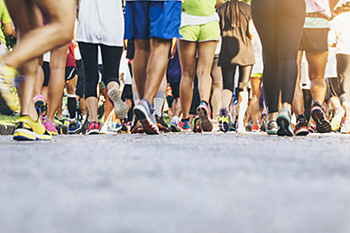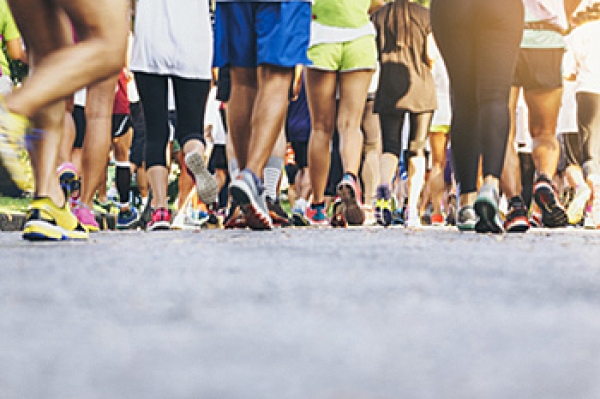
Blisters are a common occurrence for runners, and it is a good idea to find ways to avoid getting them. A blister is caused by continuous rubbing of the skin of the feet and toes against the inside of the running shoe. As the skin is disturbed it forms a pocket that fills with fluid, which if ignored will likely pop and possibly become infected. It also can become extremely painful. To avoid blisters, take a look at your footwear. Choose a running shoe that provides ample room for your toes and properly supports the arch. It is suggested that you break in your new shoes gently before taking a long run. It is equally important to wear socks that minimize friction, offer additional support for your feet, and wick moisture, all of which can help to combat the formation of blisters. Further, some running experts recommend moisturizing your feet prior to a run, to reduce friction. If you have a history of blisters, or if you have one that is causing extreme pain, please see a podiatrist as soon as possible for other treatment options.
All runners should take extra precaution when trying to avoid injury. If you have any concerns about your feet, contact Dr. Joshua David Scoll of Pennsylvania. Our doctor will treat your foot and ankle needs.
How to Prevent Running Injuries
There are a lot of mistakes a runner can make prior to a workout that can induce injury. A lot of athletes tend to overstretch before running, instead of saving those workouts for a post-run routine. Deep lunges and hand-to-toe hamstring pulls should be performed after a workout instead of during a warmup. Another common mistake is jumping into an intense routine before your body is physically prepared for it. You should try to ease your way into long-distance running instead of forcing yourself to rush into it.
More Tips for Preventing Injury
- Incorporate Strength Training into Workouts - This will help improve the body’s overall athleticism
- Improve and Maintain Your Flexibility – Stretching everyday will help improve overall performance
- “Warm Up” Before Running and “Cool Down” Afterward – A warm up of 5-10 minutes helps get rid of lactic acid in the muscles and prevents delayed muscle soreness
- Cross-Training is Crucial
- Wear Proper Running Shoes
- Have a Formal Gait Analysis – Poor biomechanics can easily cause injury
If you have any questions, please feel free to contact one of our offices located in Philadelphia, Bensalem, and Fairless Hills, PA . We offer the newest diagnostic and treatment technologies for all your foot care needs.

